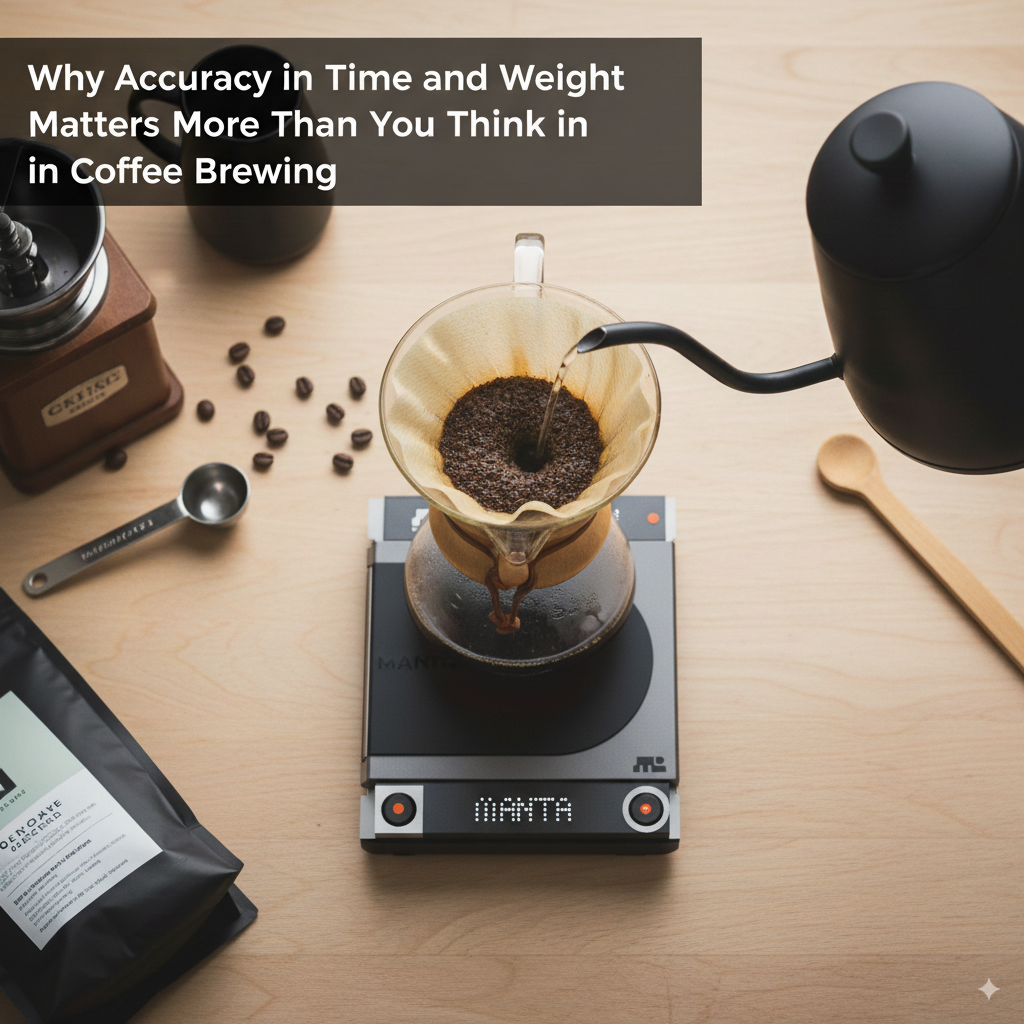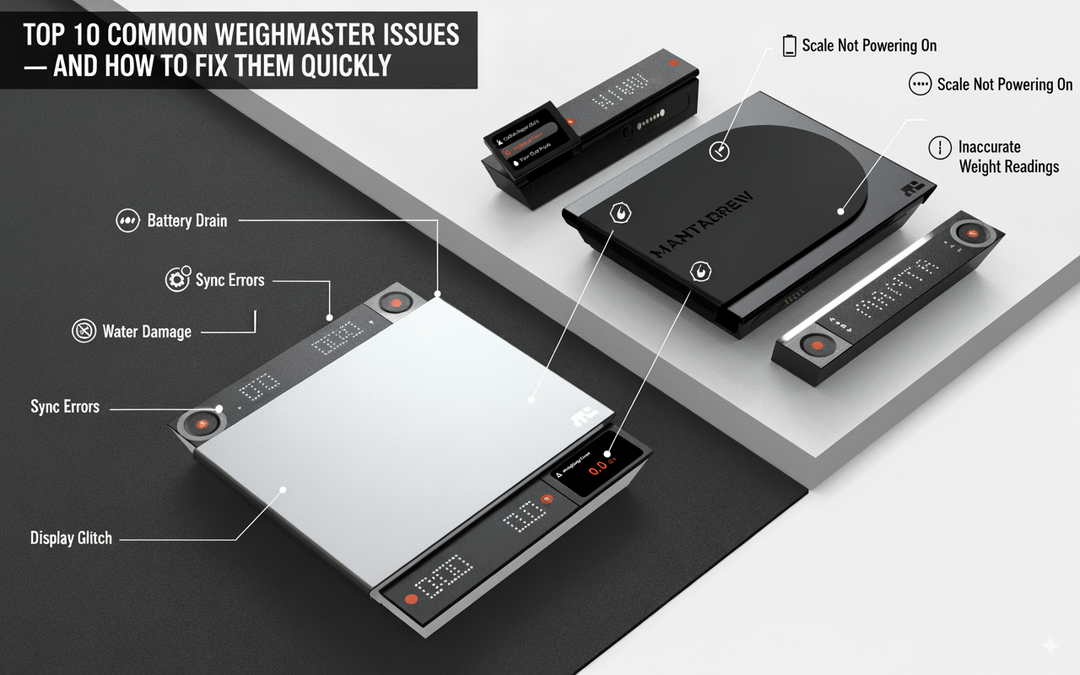How to Read Flow Rate & Extraction Time on Smart Coffee Scales
In the world of specialty coffee, consistency is everything. Whether you're brewing a delicate pour-over or dialing in an espresso shot, two metrics make all the difference: flow rate and extraction time. Thankfully, modern smart coffee scales now provide real-time feedback on both — but do you know how to read and use this data?
In this guide, we’ll break down what these numbers mean, how to interpret them, and how to use them to improve your brews — whether you’re a home barista or a pro on bar.
1️⃣ What Is Flow Rate in Coffee Brewing?
Definition & Units
Flow rate refers to the speed at which water is introduced into (or flows through) coffee grounds, typically measured in grams per second (g/s).
In pour-over, it describes how fast you’re pouring water. In espresso, it refers to how quickly liquid coffee exits the portafilter.
Why Flow Rate Matters
Flow rate directly affects how your coffee extracts:
-
Too fast = under-extraction → sour, thin, weak coffee
-
Too slow = over-extraction → bitter, astringent, heavy flavors
Understanding and controlling flow rate allows you to improve clarity, sweetness, and balance in the cup.
2️⃣ How Smart Scales Display Flow Rate
Modern coffee scales like the MANTABREW WeighMaster, Acaia, and others offer real-time flow rate feedback — either through a numerical g/s display, waveform graphs, or LED visualizations.
What You'll Typically See:
-
A live number (e.g., “3.6 g/s”) that updates as you pour or extract
-
Color-coded LED strips indicating pouring speed
-
Visual curves of flow rate over time (on app-connected scales)

Target Flow Rate Ranges:
| Brew Method | Target Flow Rate |
|---|---|
| Pour Over | 3.0 – 5.0 g/s |
| Espresso | 1.0 – 2.5 g/s |
Use this data to practice smoother pours or spot inconsistencies in your extraction.
3️⃣ What Is Extraction Time?
Extraction time refers to the total time water interacts with coffee grounds — from first contact to the end of brewing. It's measured in seconds and varies by brew method.
For Pour Over
-
Start time: First pour or first drip hitting the carafe
-
End time: When water finishes draining
-
Total brew time: Typically 2:30–3:30 minutes
A fast drawdown may mean grind is too coarse. A long brew could indicate overly fine grind or poor flow.
For Espresso
-
Start time: When the pump activates (pre-infusion start)
-
End time: When the shot ends
-
Typical range: 25–30 seconds
-
Shorter shots = brighter, more acidic
-
Longer shots = deeper, more bitter
4️⃣ How Smart Scales Track Extraction Time
Most smart scales offer two timer modes:
Manual Timer
-
Press start/stop manually
-
Offers full control
-
Preferred by pros with specific routines
Auto-Start Timer
-
Begins timing automatically on weight detection (e.g., first drip or first pour)
-
Useful for pour-over beginners or fast-paced café environments
-
Reduces errors and distraction
Scales like MANTABREW WeighMaster coffee scale and Acaia often auto-start the timer when weight begins to register — a huge help when both hands are on the kettle.
5️⃣ Using Flow Rate + Extraction Time Together
The real power comes when you combine both metrics.
Example: Pour Over Session
Let’s say you’re brewing a 15g dose to 250g water.
-
Target flow rate: 3.5–4.0 g/s
-
Target brew time: ~2:45 minutes
-
Bloom phase: 30g water in 30s
-
Main pour: Steady 3g/s flow over next 90s
By tracking time + flow live, you’ll spot if you’re pouring too quickly, lingering too long, or need to change grind size.
Diagnostic Use Cases:
| Scenario | Diagnosis |
|---|---|
| Fast flow + short brew time | Grind too coarse / poor bloom |
| Slow flow + long brew time | Grind too fine / overextraction |
| Uneven flow spikes | Inconsistent pouring technique |
| Good flow but long time | Channeling or clog in espresso puck |
✅ Conclusion
Reading flow rate and extraction time is about more than numbers — it's about brewing with awareness. With smart coffee scales, you're no longer guessing. You’re learning from every cup.
Flow rate helps you pour and extract with precision.
Extraction time keeps your brews in balance.
Together, they offer a roadmap to better, more consistent coffee.
Let your scale be your coach — and brew smarter, not harder.

☕ Bonus Tip:
If you're using a scale like the MANTABREW WeighMaster, don’t forget to explore the dynamic LED flow tracker — it gives real-time visual feedback that helps you master pour rhythm faster than ever.





